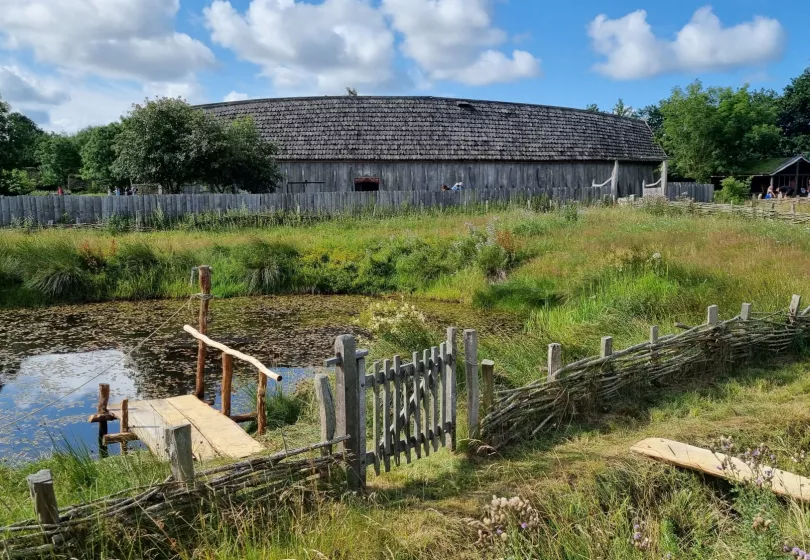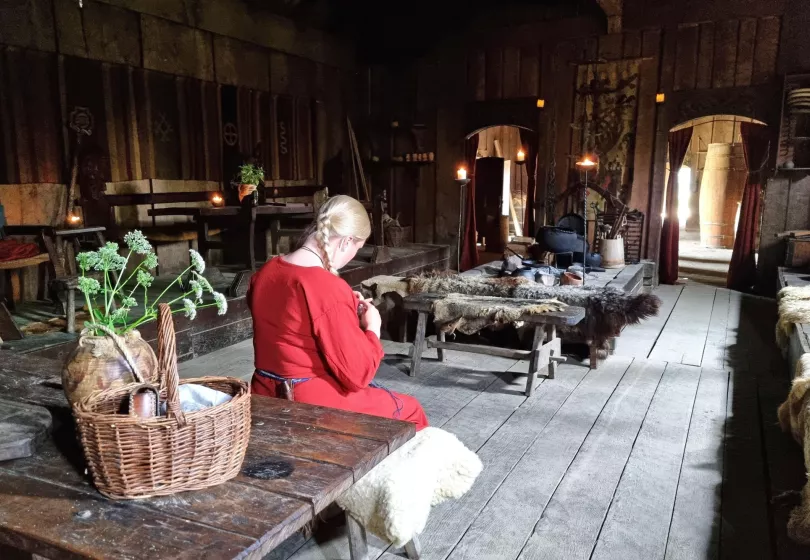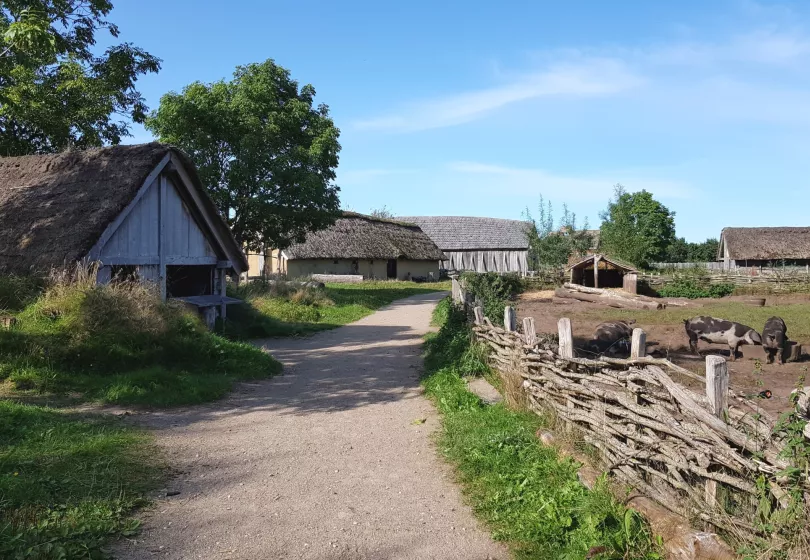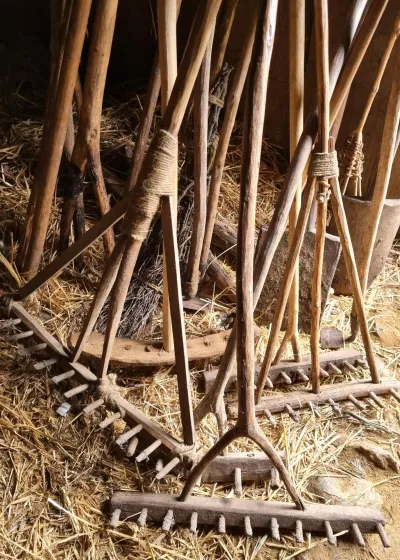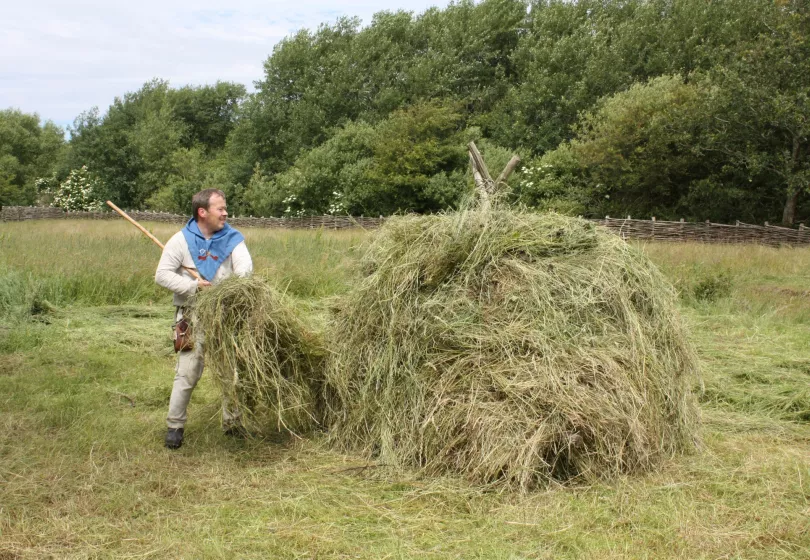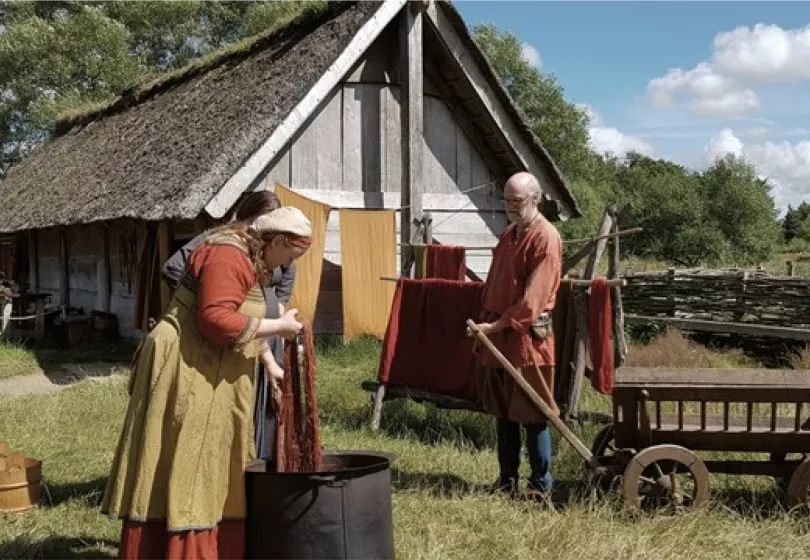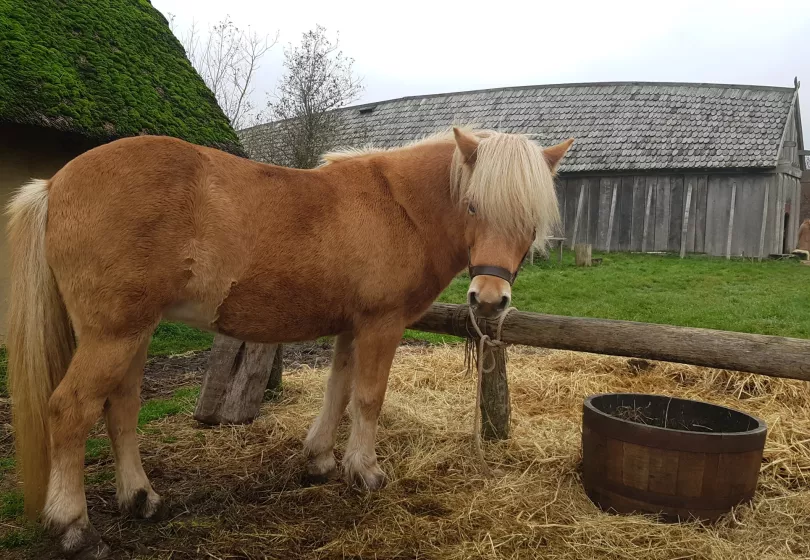The Longhouse
The longhouse follows the Trelleborg-Fyrkat model. 35 m long and 8 m wide it is built of 160 solid oak trunks with a roof made of 5000 hand-made roofing shingles. The timber used is known in Danish as flåde-ege (fleet-oak), because it was planted in the early 1800s for the reconstruction of the Danish fleet, which had been destroyed at the Battle of Copenhagen in 1801.
As so often in ancient buildings, the "better" part of the house faced west, and the stable was away to the east. The stable at Gammel Hviding was remarkably small, but towards the end of the Viking Age it gradually became common to have a stable in a separate building from the main house.
In the longhouse, you might encounter Vikings who are cooking, weaving, washing clothes and all sorts of other chores that are necessary to keep a farm this size working. Have a seat on a mattress filled with hay, or at the high table, and imagine what the atmosphere would have been like for those from the higher social classes.
The Stable
Throughout Danish history, stables and living quarters have been under the same roof, often with the stable facing east. But towards the end of the Viking Age, it became usual to have seperate stables which were not attached to the main house. The fact the longhouse only seems to have had a small stable strongly indicates that there must have been another stable somewhere on the estate. Perhaps it was this building, which was made of wattle and daub.
The Farm Smithy
On the Hviding Farm Estate, the smithy - as was usual at that time - was situated away from the prevailing wind direction and slightly out of the way when compared to the other farm buildings. The excavation showed that the building measured a good 3.5 x 4.5 m and was built with horizontal planks, most likely from oak.
In the middle of the dirt floor stands a raised forge. Bellows provide extra air to the fire, to bring the temperature up to about 1000°, the temperature required for working with iron. No one knows whether the smithy in 980 AD also had a raised forge, or whether the blacksmith would just have squatted down to work.
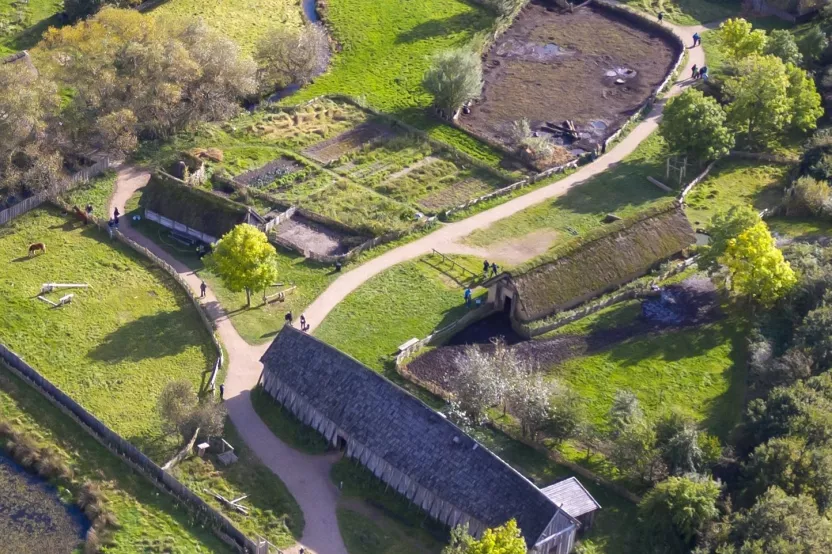
The Barn
Just like modern day farmers, the Viking farmers would have needed a dry place to store winter feed for their animals. However, there are no knows excavations of barns from the late 10th century. The barn on the reconstructed Hviding Farm Estate is a simple and light construction with wicker walls and a thatched roof.
The Bole House
The Hviding Farm Estate comprised smaller and larger service buildings, including this 50 m² workshop built with horizontal planks of oak. Depending on the time of year and what was needed, it would have had many functions in connection with the daily chores on the large, self-sufficient farm: carpentry and joinery, butchery, tanning skin, bundling straw, wickerwork, pottery and so on. Perhaps the building was also the sleeping quarters for some of the farm workers during some periods, like seasonal workers or slaves.

